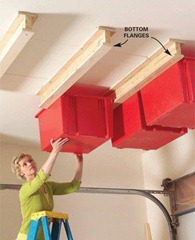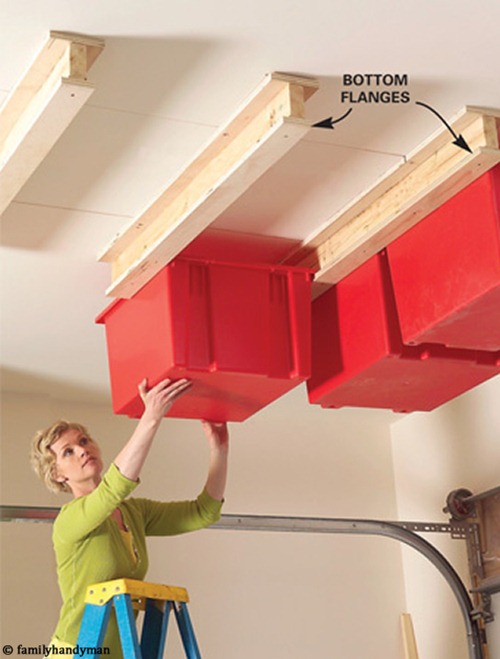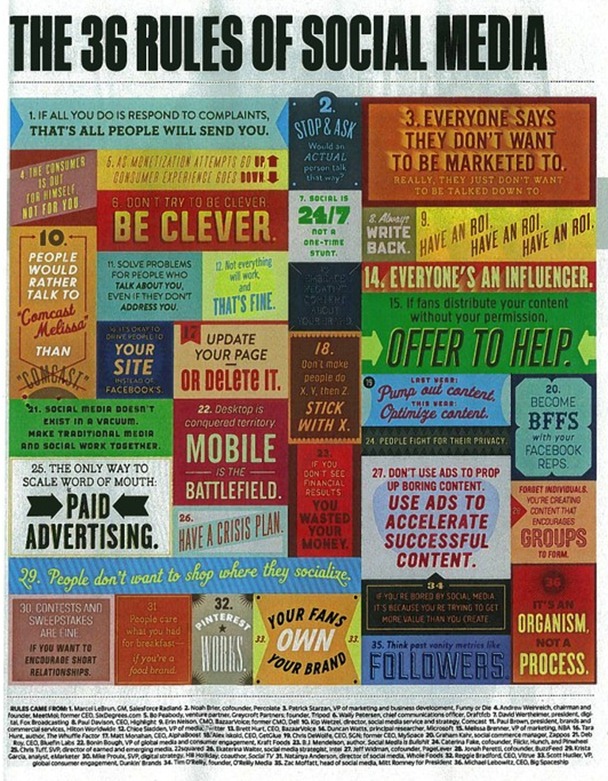How short and how often should homeowners mow their lawns? Master Gardener William Moss shares his answers on these and other grassy queries.[pb_vidembed title=”” caption=”” url=”http://www.youtube.com/watch?v=vA0ZmsRJ2q0″ type=”yt” w=”600″ h=”338″]
Archives for 2012
10 ways to increase the value of your home [video]
Whether you just bought a house or you have lived there for a while, the fastest way to increase your home’s value is by making a plan.
You will fare better if upgrades are made intentionally and not on impulse. Home improvement projects cost about 20 to 25 cents on the dollar. The other 75 to 80 cents spent go directly back into the home through increased value.
Start slowly. It’s a marathon, not a sprint. If your home is new, get to know it. If you have already been there a while, get started. List the things you want to change and the updates you would like to make. Don’t worry about organization, just write it all down. Take a guess on how long you may want to live in the house. If you’re planning on selling, talk to your realtor and make a selling plan.
Take the list and categorize by how much it may cost, including your time and money. Be realistic. It’s OK to list an outdoor pool with a waterfall, but keep your financial picture in mind.
Once you have a categorized list, take a look and prioritize what is a real "must have" and what is more of a dream. See if you can come away with a reasonable balance.
Once you have made a plan, do research or give me a call or contact me, to see what sort of return those improvements may bring. Some improvements will add considerably more value to your home than others.
Space Saving Storage Solution
Inventories Hover at Historic Lows
 While buyer demand is picking up, many consumers increasingly are finding fewer choices in housing these days. The number of homes for sale continues to remain at record lows with the nationwide inventory of for-sale single-family homes, condos, townhomes, and co-ops is about 19 percent below inventory levels from a year ago, Realtor.com reports in its analysis of July housing data of 146 markets.
While buyer demand is picking up, many consumers increasingly are finding fewer choices in housing these days. The number of homes for sale continues to remain at record lows with the nationwide inventory of for-sale single-family homes, condos, townhomes, and co-ops is about 19 percent below inventory levels from a year ago, Realtor.com reports in its analysis of July housing data of 146 markets.
“Low inventories, combined with rising list prices and lower times on market, are positive signs that the overall market is in a stabilization mode,” Realtor.com reports.
Median asking prices were 2.63 percent above list prices in July, and the median age of the housing inventory has fallen about 9 percent in that time period, Realtor.com reports.
California cities have seen some of the largest drops in inventory levels in the past year, as well as some of the largest price increases.
13 Metros With Largest Inventory Drops
The following metro areas have seen the largest drops in inventories of for-sale homes in the past year (July 2012 compared to July 2011):
1. Oakland, Calif.: -59.30 percent
2. Fresno, Calif.: -47.81 percent
3. Bakersfield, Calif: -44.71 percent
4. Seattle-Bellevue-Everett, Wash.: -42.23 percent
5. San Jose, Calif.: -41.76 percent
6. San Francisco, Calif.: -40.26 percent
7. Stockton-Lodi, Calif.: -40.24 percent
8. Riverside-San Bernardino, Calif.: -40.03 percent
9. Atlanta, Ga.: -38.27 percent
10. Sacramento, Calif: -36.43 percent
11. Santa Barbara-Santa Maria-Lompoc, Calif.: -34.89 percent
12. San Diego, Calif.: -34.55 percent
13. Phoenix-Mesa, Ariz.: -34.37 percent
By Melissa Dittmann Tracey, REALTOR® Magazine Daily News
The city of staples
 Office boredom has reached new heights with this ingenious staple sculpture by British artist Peter Root.
Office boredom has reached new heights with this ingenious staple sculpture by British artist Peter Root.
It took approximately 100,000 staples to form Ephemicropolis, which makes you wonder who’s staring dumbfounded at the supply closet wondering where that last order went.
All kidding aside, here’s a video explaining the creation of this gleaming miniature city
[pb_vidembed title=”” caption=”” url=”http://vimeo.com/10875342″ type=”vem” w=”600″ h=”338″]
The Ultimate Guide to Winning the Battle Against Mosquitoes
 One of the ultimate buzz kills of a backyard BBQ is having party crashing, ankle biting, blood sucking mosquitoes as your “uninvited guests”. In addition to leaving their gift of an itchy bite in the most uncomfortable and hard to reach places their bites also leave a possibility of disease transmission. Take a look at these helpful hints for limiting their habitat on your property and other repellent options.
One of the ultimate buzz kills of a backyard BBQ is having party crashing, ankle biting, blood sucking mosquitoes as your “uninvited guests”. In addition to leaving their gift of an itchy bite in the most uncomfortable and hard to reach places their bites also leave a possibility of disease transmission. Take a look at these helpful hints for limiting their habitat on your property and other repellent options.
Remove Standing Water
Mosquitoes LOVE water because they require it to breed. This is why a rainy spring often leads to a mosquito filled summer. About.com suggests these four tips:
Drill holes in the bottom, not the sides, of any garbage or recycling containers stored outdoors. Holes on the sides still allow enough water to accumulate in the bottom for mosquitoes to breed.
Keep gutters clean and unclogged. Be sure your downspouts drain properly, without leaving puddles in the drainage area. You may need to reroute your downspouts or add extensions to carry water away.
Keep swimming pools cleaned and chlorinated, even when not in use. Homeowners who go on vacation without chlorinating their pools may return to a veritable mosquito hatchery.
Dump anything that holds water twice per week if it has rained. Birdbaths, non-chlorinated wading pools, footbaths, garbage can lids, and pottery will all attract breeding mosquitoes. Remember to empty the saucers under your flower pots, and don’t leave water in pet bowls for more than two days.
Choose Your Lighting Wisely
Replace outdoor lights with yellow bulbs, which are less attractive to mosquitoes. Products such as tiki torches, citronella candles, and lanterns will keep the pests away from the immediate area where you’re dining al fresco. (ivillage.com)
Guard Your Body
While some prefer to spray mosquito repellant others prefer an all-natural pest repellent. If you aren’t a fan of sprays like Off or Repel there are many natural DIY alternatives you can make yourself. One trick that has worked for me is sticking a Bounce® brand dryer sheet in each pocket. Something about these fabric softener sheets repels them…and bonus…it smells awesome!
Don’t Bother Trying These
According to Wayne J. Crans, Associate Research Professor in Entomology at Rutgers University, these often-touted mosquito solutions are not worth your time or money.
Bug zappers. Though the satisfying sizzle you hear from this modern day insect torture device will convince you it’s working, don’t expect much relief from backyard mosquitoes. According to Crans, biting insects (including mosquitoes) generally make up less than 1% of the bugs zapped in these popular devices. Many beneficial insects, on the other hand, do get electrocuted.
Citrosa plants. While citronella oil does have proven mosquito-repellent properties, the genetically-modified plants sold for this purpose do not. In tests by researchers, the test subjects bitten as often while surrounded by the Citrosa plants as without them. In fact, mosquitoes were observed landing on the leaves of Citrosa plants during the study.
Bats and/or purple martins. While both bats and the colonial purple martins will consume mosquitoes, the offending insects make up a small percentage of their natural diet. Assertions about these insectivores being effective mosquito controls grew out of misrepresented and misinterpreted data from unrelated studies. While providing habitat for bats and purple martins has its value, don’t do it if only to reduce your mosquito populations.
Electronic devices that transmit sounds to mimic male mosquitoes or dragonflies do not work. Crans goes so far as to suggest “the claims made by distributors border on fraud.”
Learn the Facts
Every kid remembers an adult trying to console them in the midst of an itching episode with “they like your blood because you are so sweet” but I always wondered if mosquitoes actually have a preference for their victims. I found this Are You A Mosquito Magnet Infographic pretty interesting and hope you do too!






